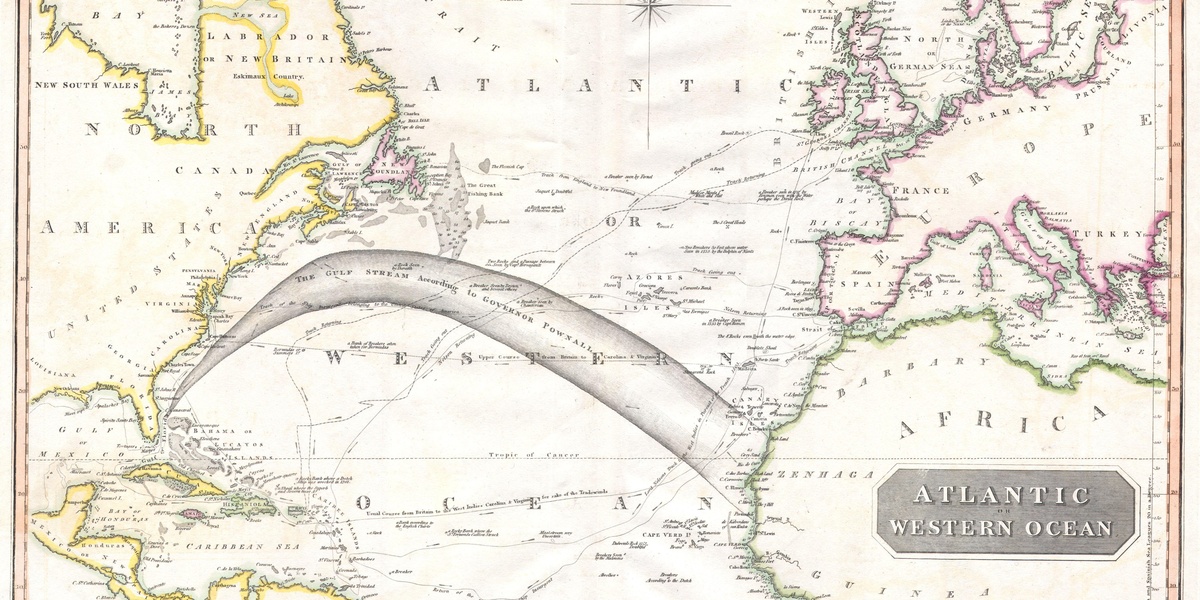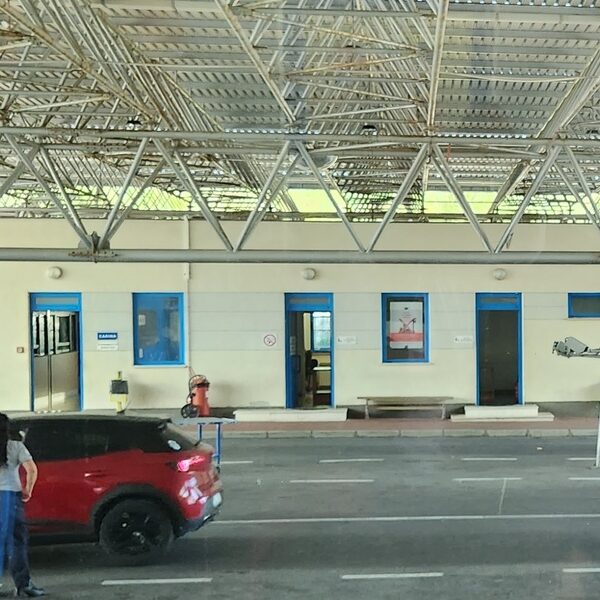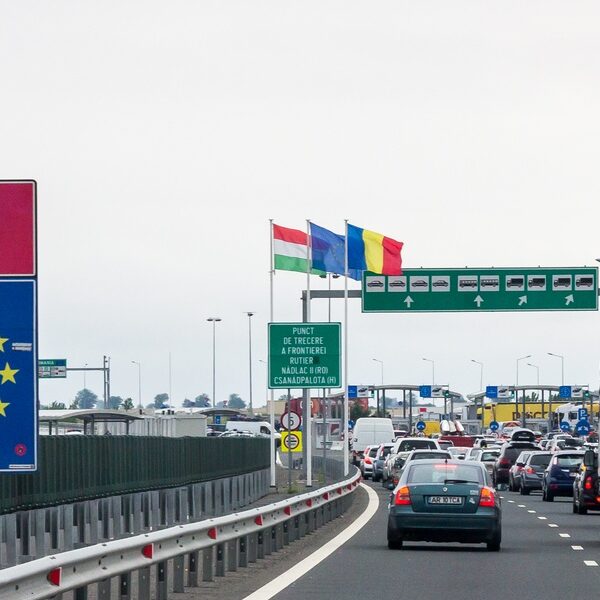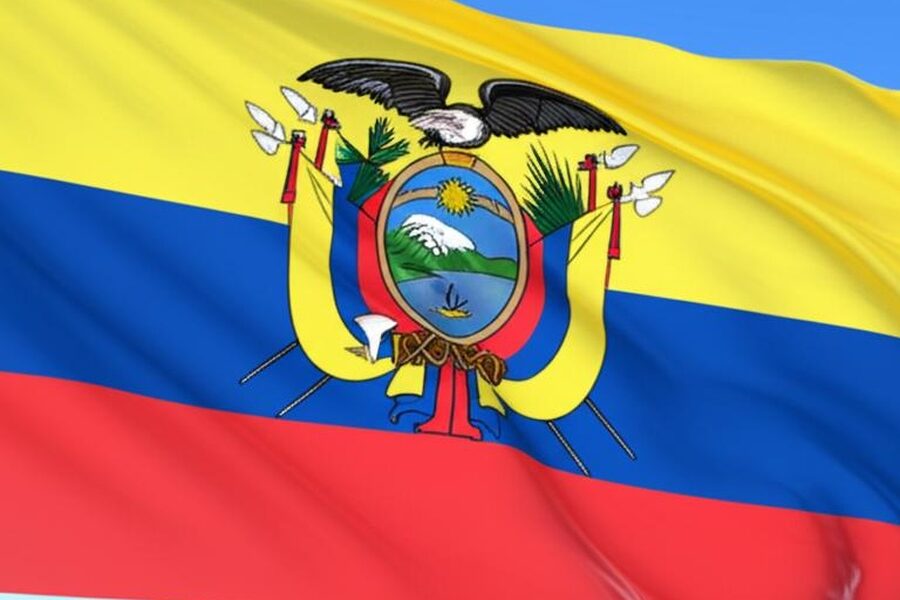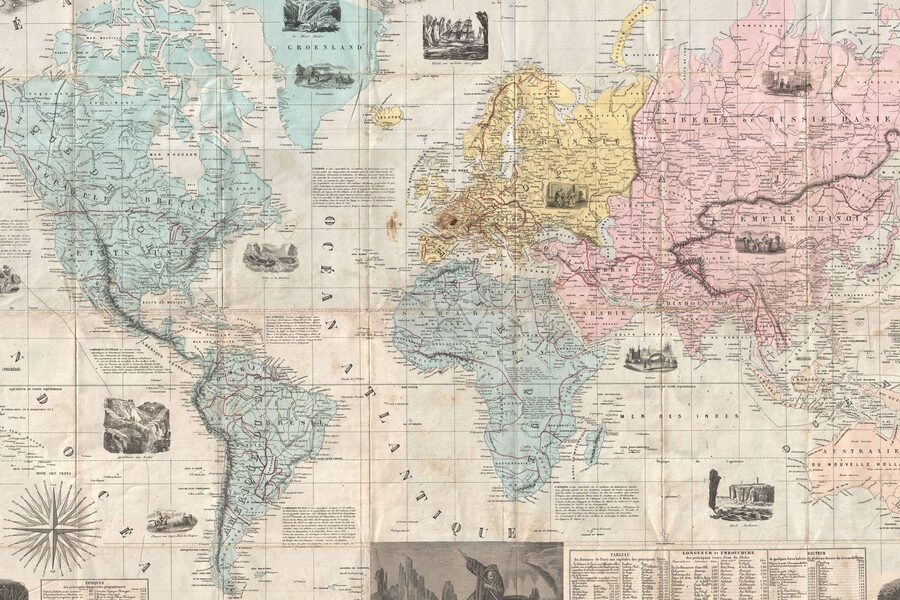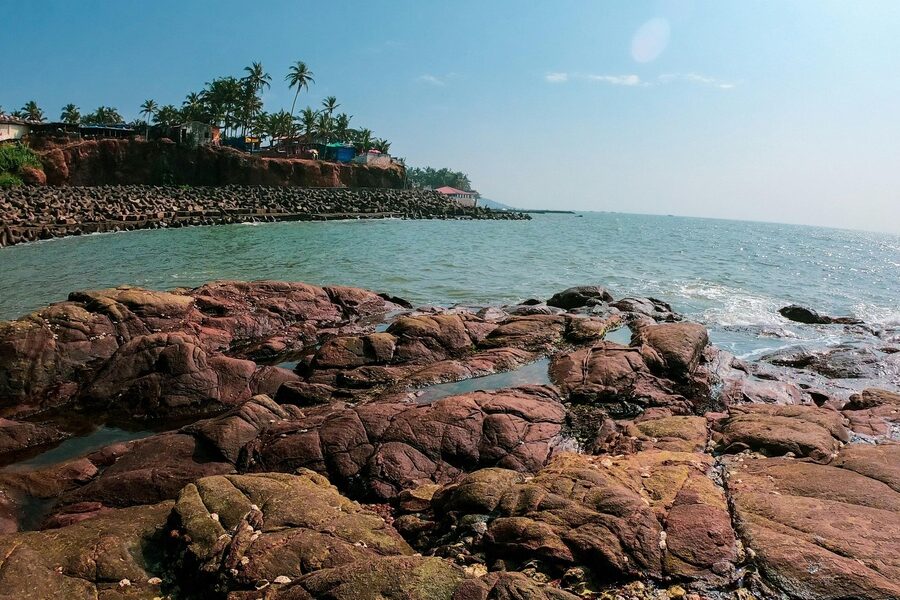The Atlantic Ocean touches the shores of 70 countries across several continents, making it one of the most connected oceans on Earth. These coastal nations span Africa, Europe, North America, South America, and the Caribbean. Many of them have unique features, such as Angola’s rich offshore oil fields and Iceland’s volcanic North Atlantic islands. This wide reach highlights the Atlantic’s importance for trade, culture, and natural resources around the world.
Below is a detailed list of countries that border the Atlantic Ocean, organized by continent. Each entry includes key information to help you understand these nations’ connections to the ocean.
Country This column names each country that has a coastline along the Atlantic Ocean or its major seas, such as the North Sea and the Caribbean Sea.
Continent Shows the continent where the country is located, grouping nations into Africa, Europe, North America, South America, and the Caribbean for easier navigation.
Coastline (km) Provides the length of the country’s border with the Atlantic Ocean measured in kilometers. This helps gauge how much access a country has to the ocean.
Flag Displays the country’s national flag, adding a visual identifier to the list.
Description Offers a short, interesting fact or geographical detail about the country’s Atlantic coast. This gives deeper insight into each nation’s maritime significance or unique coastal features.
countries that border the atlantic ocean
| Country | Continent | Coastline (km) | Flag |
|---|---|---|---|
| Portugal | Europe | 943 | 🇵🇹 |
| Spain | Europe | 4,964 | 🇪🇸 |
| France | Europe | 3,427 | 🇫🇷 |
| United Kingdom | Europe | 12,429 | 🇬🇧 |
| Ireland | Europe | 1,448 | 🇮🇪 |
| Netherlands | Europe | 451 | 🇳🇱 |
| Belgium | Europe | 66.5 | 🇧🇪 |
| Germany | Europe | 2,389 | 🇩🇪 |
| Denmark | Europe | 7,314 | 🇩🇰 |
| Norway | Europe | 25,148 | 🇳🇴 |
| Sweden | Europe | 3,218 | 🇸🇪 |
| Finland | Europe | 1,126 | 🇫🇮 |
| Estonia | Europe | 3,794 | 🇪🇪 |
| Latvia | Europe | 494 | 🇱🇻 |
| Lithuania | Europe | 90 | 🇱🇹 |
| Poland | Europe | 440 | 🇵🇱 |
| Russia | Europe | 20,000 | 🇷🇺 |
| Iceland | Europe | 4,970 | 🇮🇸 |
| Morocco | Africa | 1,835 | 🇲🇦 |
| Mauritania | Africa | 754 | 🇲🇷 |
| Senegal | Africa | 531 | 🇸🇳 |
| Gambia | Africa | 80 | 🇬🇲 |
| Guinea-Bissau | Africa | 350 | 🇬🇼 |
| Guinea | Africa | 320 | 🇬🇳 |
| Sierra Leone | Africa | 402 | 🇸🇱 |
| Liberia | Africa | 579 | 🇱🇷 |
| Côte d’Ivoire | Africa | 515 | 🇨🇮 |
| Ghana | Africa | 539 | 🇬🇭 |
| Togo | Africa | 56 | 🇹🇬 |
| Benin | Africa | 121 | 🇧🇯 |
| Nigeria | Africa | 853 | 🇳🇬 |
| Cameroon | Africa | 402 | 🇨🇲 |
| Equatorial Guinea | Africa | 296 | 🇬🇶 |
| Gabon | Africa | 885 | 🇬🇦 |
| Republic of the Congo | Africa | 169 | 🇨🇬 |
| Angola | Africa | 1,600 | 🇦🇴 |
| Democratic Republic of the Congo | Africa | 37 | 🇨🇩 |
| Namibia | Africa | 1,572 | 🇳🇦 |
| South Africa | Africa | 2,798 | 🇿🇦 |
| Cape Verde | Africa | 965 | 🇨🇻 |
| São Tomé and Príncipe | Africa | 160 | 🇸🇹 |
| Canada | North America | 243,042 | 🇨🇦 |
| United States | North America | 15,364 | 🇺🇸 |
| Mexico | North America | 9,330 | 🇲🇽 |
| Belize | North America | 386 | 🇧🇿 |
| Guatemala | North America | 400 | 🇬🇹 |
| Honduras | North America | 832 | 🇭🇳 |
| Nicaragua | North America | 910 | 🇳🇮 |
| Costa Rica | North America | 212 | 🇨🇷 |
| Panama | North America | 1,288 | 🇵🇦 |
| Cuba | North America | 3,735 | 🇨🇺 |
| Bahamas | North America | 3,542 | 🇧🇸 |
| Jamaica | North America | 1,022 | 🇯🇲 |
| Haiti | North America | 1,771 | 🇭🇹 |
| Dominican Republic | North America | 1,288 | 🇩🇴 |
| Saint Kitts and Nevis | North America | 386 | 🇰🇳 |
| Antigua and Barbuda | North America | 153 | 🇦🇬 |
| Dominica | North America | 148 | 🇩🇲 |
| Saint Lucia | North America | 158 | 🇱🇨 |
| Saint Vincent and the Grenadines | North America | 84 | 🇻🇨 |
| Grenada | North America | 121 | 🇬🇩 |
| Barbados | North America | 97 | 🇧🇧 |
| Trinidad and Tobago | North America | 362 | 🇹🇹 |
| Colombia | South America | 1,760 | 🇨🇴 |
| Venezuela | South America | 2,800 | 🇻🇪 |
| Guyana | South America | 459 | 🇬🇾 |
| Suriname | South America | 386 | 🇸🇷 |
| Brazil | South America | 7,491 | 🇧🇷 |
| Uruguay | South America | 660 | 🇺🇾 |
| Argentina | South America | 4,989 | 🇦🇷 |
Descriptions
Portugal
Known for its extensive Atlantic coastline, Portugal was a dominant maritime power, initiating the Age of Discovery from its strategic coastal position.
Spain
Spain features a significant Atlantic and Cantabrian Sea coastline, vital for its historical exploration, fishing industries, and diverse marine ecosystems.
France
France boasts a long Atlantic seaboard, including the English Channel and Bay of Biscay, crucial for trade, maritime heritage, and coastal tourism.
United Kingdom
An island nation with a vast and varied Atlantic coastline, the UK’s maritime history is deeply intertwined with its access to the North Sea and wider ocean.
Ireland
Located on the edge of the European continental shelf, Ireland’s rugged Atlantic coastline is famous for its dramatic cliffs, wild beauty, and rich fishing grounds.
Netherlands
Much of the Netherlands is below sea level, protected by dikes along its North Sea coast, which is vital for its shipping, trade, and fishing industries.
Belgium
Belgium’s short North Sea coast, though small, is a key gateway to Europe and home to major ports, facilitating extensive trade and tourism.
Germany
Germany has significant North Sea and Baltic Sea coastlines, with its major ports facilitating extensive trade, shipping, and a vibrant maritime industry.
Denmark
Denmark is strategically located with coastlines on the North Sea and Baltic Sea, controlling the critical straits that connect these important waterways.
Norway
Norway’s incredibly long and complex Atlantic coastline is defined by its iconic fjords, crucial for its fishing, oil, and gas industries, and stunning scenery.
Sweden
Sweden’s long Baltic Sea coast is essential for its trade, shipbuilding, and ferry connections, vital for its economy and international links.
Finland
Finland’s extensive Baltic Sea coastline, featuring numerous archipelagos, is ice-bound in winter but vital for shipping, recreation, and natural beauty.
Estonia
Estonia’s Baltic Sea coast features numerous islands and a rich maritime history, serving as a significant transit hub between East and West.
Latvia
Latvia’s Baltic Sea coastline includes major ports, playing a significant role in its economy, trade routes, and providing access to international waters.
Lithuania
With its short but strategic Baltic Sea coastline, Lithuania relies on its port of Klaipėda for trade, maritime access, and economic development.
Poland
Poland’s Baltic Sea coastline is home to important ports like Gdańsk and Gdynia, central to its trade, shipbuilding, and maritime defense.
Russia
Russia’s vast coastline includes a significant Arctic portion connected to the North Atlantic and a crucial Baltic Sea enclave, important for trade and defense.
Iceland
An island nation in the North Atlantic, Iceland’s volcanic landscape is shaped by its marine environment, rich in fisheries and geothermal activity.
Morocco
Morocco possesses a substantial Atlantic coastline, vital for fishing, trade, and its connection to European and African maritime routes.
Mauritania
Mauritania’s Atlantic coast is known for its rich fishing grounds, a cornerstone of its economy and a key food source for its population.
Senegal
Senegal’s Atlantic coast, including the bustling city of Dakar, is a major hub for West African trade, fisheries, and cultural exchange.
Gambia
The smallest country in mainland Africa, Gambia’s short Atlantic coastline is essential for its tourism and fishing industries, bordering a river estuary.
Guinea-Bissau
Guinea-Bissau’s coastline is characterized by numerous islands and estuaries, supporting rich biodiversity, traditional fishing, and coastal communities.
Guinea
Guinea’s Atlantic coast provides access to vital shipping routes and supports significant fishing and agricultural activities, contributing to its economy.
Sierra Leone
Sierra Leone’s Atlantic coastline is marked by beautiful beaches and natural harbors, essential for trade, diamond exports, and local livelihoods.
Liberia
Liberia’s tropical Atlantic coast is home to its capital, Monrovia, and plays a crucial role in its economy through shipping and resource exports.
Côte d’Ivoire
Côte d’Ivoire’s Atlantic coast is vital for its agricultural exports like cocoa and coffee, shipped from major ports like Abidjan.
Ghana
Ghana’s Atlantic coastline is central to its economy, supporting fishing, oil production, and major ports for regional trade and commerce.
Togo
Togo has a very short Atlantic coastline, but its port of Lomé is a significant regional transshipment hub, crucial for its economic activity.
Benin
Benin’s Atlantic coast, though brief, is important for its cotton exports and the bustling port city of Cotonou, a key economic center.
Nigeria
Nigeria’s extensive Atlantic coastline along the Gulf of Guinea is crucial for its vast oil and gas industry and major commercial ports.
Cameroon
Cameroon’s Atlantic coastline is a gateway for its natural resources and includes the port of Douala, a vital economic hub for the region.
Equatorial Guinea
Equatorial Guinea’s Atlantic coast, including the island of Bioko, is a key area for its offshore oil and gas industry.
Gabon
Gabon’s Atlantic coastline is largely forested and sparsely populated, but it’s important for its oil and timber exports, driving the economy.
Republic of the Congo
The Republic of the Congo’s short Atlantic coastline provides its only direct sea access, primarily through the strategic port of Pointe-Noire.
Angola
Angola’s long Atlantic coastline is rich in offshore oil and gas, which are the main drivers of its economy and export revenues.
Democratic Republic of the Congo
Despite its vast size, DR Congo has a very short, strategic Atlantic coastline, providing its sole direct access to the sea.
Namibia
Namibia’s arid Atlantic coastline, featuring the unique Skeleton Coast, is known for its diamond deposits and rich marine life.
South Africa
South Africa has significant Atlantic and Indian Ocean coastlines, with the Atlantic side providing vital shipping routes and abundant marine resources.
Cape Verde
An archipelago nation in the central Atlantic, Cape Verde’s islands are known for their volcanic landscapes, vibrant culture, and strategic maritime location.
São Tomé and Príncipe
These two volcanic islands in the Gulf of Guinea are Africa’s second-smallest nation, known for their cocoa production and biodiversity.
Canada
Canada boasts the world’s longest coastline, with vast stretches bordering the Atlantic Ocean and its associated Arctic waters, vital for trade and resources.
United States
The United States has an extensive Atlantic coastline, encompassing the Gulf of Mexico and Caribbean, crucial for trade, defense, and diverse coastal recreation.
Mexico
Mexico’s eastern coastline faces the Gulf of Mexico and the Caribbean Sea, important for its oil industry, tourism, and diverse ecosystems.
Belize
Belize’s Caribbean coast is famous for its barrier reef, a UNESCO World Heritage site popular for diving, marine biodiversity, and eco-tourism.
Guatemala
Guatemala has a smaller but important Caribbean coastline, providing access to trade routes and supporting fishing communities and ecotourism.
Honduras
Honduras’s Caribbean coast is known for its beautiful islands, coral reefs, and historical port cities, attracting tourism and supporting fishing.
Nicaragua
Nicaragua’s Caribbean coast, often called the Mosquito Coast, is characterized by wetlands, indigenous communities, and rich natural landscapes.
Costa Rica
Costa Rica’s Caribbean coast is less developed than its Pacific side but offers pristine rainforests, rich biodiversity, and unique cultural experiences.
Panama
Panama’s Caribbean coast hosts the entrance to the Panama Canal, one of the world’s most vital shipping arteries, connecting two oceans.
Cuba
The largest island in the Caribbean, Cuba’s extensive coastline is central to its history, culture, and economic activities, including tourism.
Bahamas
An archipelago nation in the Atlantic, the Bahamas is renowned for its clear waters, coral reefs, and vibrant tourism industry.
Jamaica
Jamaica’s Caribbean coastline is famous for its stunning beaches, lush landscapes, and vibrant reggae culture, attracting visitors worldwide.
Haiti
Haiti shares the island of Hispaniola and has an extensive Caribbean coastline, playing a role in its fishing, local trade, and cultural identity.
Dominican Republic
Occupying the eastern part of Hispaniola, the Dominican Republic’s long Caribbean coastline is a major tourism destination, known for its resorts.
Saint Kitts and Nevis
This dual-island nation in the Lesser Antilles boasts volcanic landscapes and a coastline vital for its tourism sector and historical sites.
Antigua and Barbuda
Known for its 365 beaches, this Caribbean nation’s coastline is the foundation of its luxury tourism industry, attracting sailing enthusiasts.
Dominica
The “Nature Isle of the Caribbean,” Dominica’s rugged coastline is characterized by volcanic peaks, rainforests, and waterfalls, offering eco-tourism.
Saint Lucia
Saint Lucia’s picturesque Caribbean coastline, dominated by the iconic Pitons, is a major draw for tourists seeking natural beauty and luxury.
Saint Vincent and the Grenadines
This multi-island nation’s Caribbean coast is popular for sailing, pristine natural beauty, and vibrant marine life, attracting adventurers.
Grenada
Known as the “Spice Isle,” Grenada’s Caribbean coastline features beautiful beaches and an economy supported by tourism and agriculture.
Barbados
An eastern Caribbean island nation, Barbados is renowned for its beautiful Atlantic beaches and strong tourism sector, offering a vibrant culture.
Trinidad and Tobago
This dual-island nation off Venezuela’s coast has both Atlantic and Caribbean coastlines, rich in oil and gas, and famous for its carnival.
Colombia
Colombia’s extensive Caribbean coastline includes vibrant cities and important ports, crucial for its trade, tourism, and diverse culture.
Venezuela
Venezuela’s long Caribbean coastline is rich in oil resources and features diverse landscapes, from beaches to vast deltas.
Guyana
Guyana’s Atlantic coastline is low-lying and protected by seawalls, vital for its trade and recent offshore oil discoveries, shaping its economy.
Suriname
Suriname’s Atlantic coast is characterized by mangrove forests and is important for its bauxite and gold exports, contributing to its economy.
Brazil
Brazil boasts the longest Atlantic coastline in South America, central to its economy, culture, and biodiversity, with iconic beaches and vast ports.
Uruguay
Uruguay’s Atlantic coastline, including the Rio de la Plata estuary, is important for tourism and agricultural exports, with popular resort towns.
Argentina
Argentina’s vast Atlantic coastline extends south to Patagonia, supporting significant fishing, oil, and tourism industries, with diverse wildlife.

